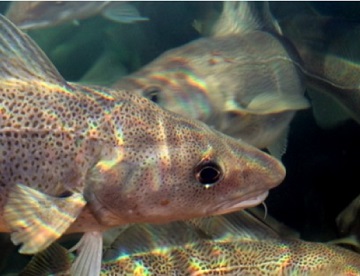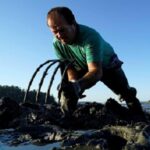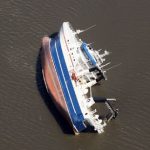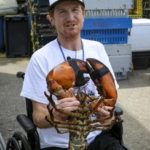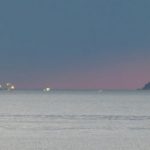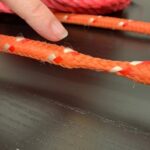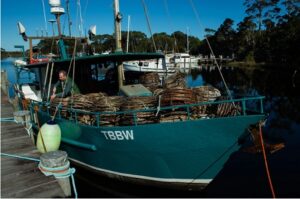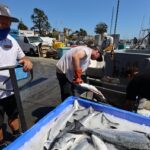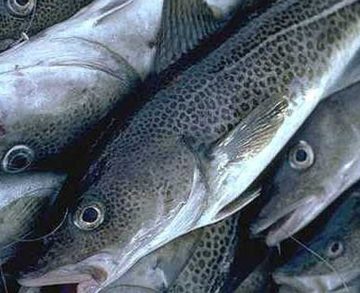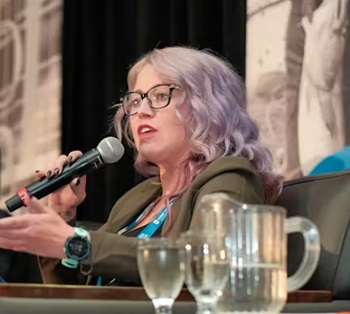 After two seasons of navigating turbulent waters, there is a sense of hope that the Newfoundland and Labrador fishery can finally sail into calmer conditions in April 2024. There was certainly no shortage of conflict on many fronts in 2024, despite efforts to get past some of the tensions that plagued the 2023 season. The provincial government had to step in and help resolve a tie-up by snow crab harvesters in the spring of 2023 that led to a six-week delay to the traditional start of the fishing season. The government formed a committee tasked with finding a better way to settle snow crab pricing, but even its recommendations failed to prevent another disagreement that led to another delayed start in April 2024. more, >>CLICK TO READ<< 09:01
After two seasons of navigating turbulent waters, there is a sense of hope that the Newfoundland and Labrador fishery can finally sail into calmer conditions in April 2024. There was certainly no shortage of conflict on many fronts in 2024, despite efforts to get past some of the tensions that plagued the 2023 season. The provincial government had to step in and help resolve a tie-up by snow crab harvesters in the spring of 2023 that led to a six-week delay to the traditional start of the fishing season. The government formed a committee tasked with finding a better way to settle snow crab pricing, but even its recommendations failed to prevent another disagreement that led to another delayed start in April 2024. more, >>CLICK TO READ<< 09:01
Tag Archives: cod
More fish, for now: Offshore welcomes latest NL northern cod assessment, union questions DFO science
 The latest scientific assessment of northern cod is being touted as good news by companies with stakes in the offshore fishery but is being met with condemnation from the union representing inshore harvesters. The federal Department of Fisheries and Oceans (DFO) announced its findings during a Thursday, April 3, technical briefing. One year ago, DFO’s stock assessment moved northern cod out of what’s known as the critical zone — a level where serious harm is occurring to the stock — to the cautious zone, a designation in which the stock can sustain some fishing pressure. That led to the lifting of the moratorium on commercially fishing for northern cod — the stock of the species found in the waters off Newfoundland’s eastern coast and as far north as the southern shores of Labrador. Photos, more, >>CLICK TO READ<< 12:49
The latest scientific assessment of northern cod is being touted as good news by companies with stakes in the offshore fishery but is being met with condemnation from the union representing inshore harvesters. The federal Department of Fisheries and Oceans (DFO) announced its findings during a Thursday, April 3, technical briefing. One year ago, DFO’s stock assessment moved northern cod out of what’s known as the critical zone — a level where serious harm is occurring to the stock — to the cautious zone, a designation in which the stock can sustain some fishing pressure. That led to the lifting of the moratorium on commercially fishing for northern cod — the stock of the species found in the waters off Newfoundland’s eastern coast and as far north as the southern shores of Labrador. Photos, more, >>CLICK TO READ<< 12:49
DFO releases ‘optimistic’ northern cod stock assessment
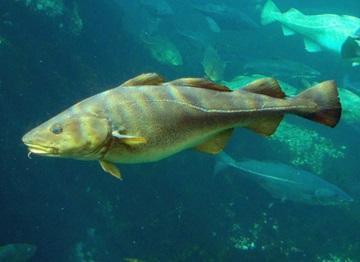 The latest northern cod stock assessment from the Department of Fisheries and Oceans is more optimistic than last year’s, according to scientists. The stock is currently about twice the limit reference point, and the department says there’s a greater than 99 per cent probability it’s still above the critical zone in Newfoundland and Labrador. The limit reference point marks the boundary between what’s considered critical and cautious. Cautious and healthy zones were not specified in the assessment’s release on Thursday because an upper stock reference has not been established yet. more, >>CLICK TO READ<< 16:03
The latest northern cod stock assessment from the Department of Fisheries and Oceans is more optimistic than last year’s, according to scientists. The stock is currently about twice the limit reference point, and the department says there’s a greater than 99 per cent probability it’s still above the critical zone in Newfoundland and Labrador. The limit reference point marks the boundary between what’s considered critical and cautious. Cautious and healthy zones were not specified in the assessment’s release on Thursday because an upper stock reference has not been established yet. more, >>CLICK TO READ<< 16:03
The ‘sustainable’ cod in your shopping basket may be no such thing – new study reveals mislabelling
 Cod sold in some European supermarkets is being mislabeled and is actually fished far from its claimed origin, according to our new study. We sampled cod sold in Germany, Spain, France and the UK and found that about 30% of it originated in a different location. Seafood mislabeling, in which one species is sold as another, is a common problem. It may happen by mistake or by deliberate fraud, in which case, there is at least hope for improvement, as various DNA methods are now available for testing species. But our new research highlights another problem: the mislabeling of geographical origin. As with species mislabeling, this issue can affect the sustainable management of fisheries, the conservation of fish in the wild and consumer trust. more, >>CLICK TO READ<< 14:53
Cod sold in some European supermarkets is being mislabeled and is actually fished far from its claimed origin, according to our new study. We sampled cod sold in Germany, Spain, France and the UK and found that about 30% of it originated in a different location. Seafood mislabeling, in which one species is sold as another, is a common problem. It may happen by mistake or by deliberate fraud, in which case, there is at least hope for improvement, as various DNA methods are now available for testing species. But our new research highlights another problem: the mislabeling of geographical origin. As with species mislabeling, this issue can affect the sustainable management of fisheries, the conservation of fish in the wild and consumer trust. more, >>CLICK TO READ<< 14:53
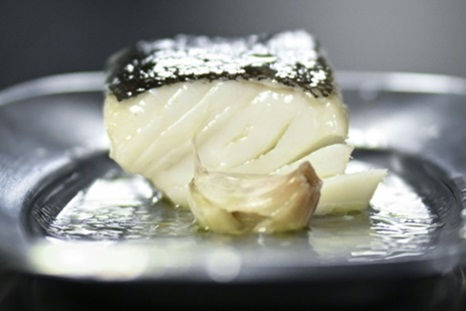
Cod is king in Portugal at Christmas
Salt cod has long been a national staple in Portugal, where it is said there are as many recipes for this humble fish as there are days in the year. And at Christmas the dried and salted fish is central to meals at family gatherings in Portugal, the world’s biggest consumer of “bacalhau” as it is called here, just as turkey is at Thanksgiving in the United States. The most traditional way to prepare salt cod is to bake it in the oven and serve it with boiled potatoes. But it can also be grilled, turned into fritters or even used to replace meat in a lasagna. When I’m asked to come up with a menu for Christmas, I am bound to suggest a salt cod recipe,” said chef Ricardo Simoes of the Federico restaurant located at a luxury hotel in central Lisbon. photos, more, >>CLICK TO READ<< 07:18
Why Canada’s decision to lift a ban on cod fishing in Newfoundland after 32 years is so controversial – Podcast
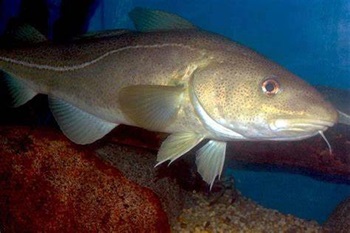 For generations, cod fishing was a way of life in Newfoundland and Labrador, the easternmost province in Canada. But in 1992, after cod stocks in the north Atlantic plummeted, the federal government imposed a moratorium on cod fishing. It was to last for 32 years until it was lifted in June 2024. Fishing has been the backbone of the economy for centuries, and so when the Canadian government imposed a cod moratorium in 1992 it had a huge impact, with an estimated 30,000 people in Newfoundland and Labrador out of work overnight. Some cod fishing was permitted in inshore waters from the late 1990s in boats less than 20 metres long, but all commercial offshore trawler fishing was prohibited. Links, more, >>CLICK TO READ<< 11:48
For generations, cod fishing was a way of life in Newfoundland and Labrador, the easternmost province in Canada. But in 1992, after cod stocks in the north Atlantic plummeted, the federal government imposed a moratorium on cod fishing. It was to last for 32 years until it was lifted in June 2024. Fishing has been the backbone of the economy for centuries, and so when the Canadian government imposed a cod moratorium in 1992 it had a huge impact, with an estimated 30,000 people in Newfoundland and Labrador out of work overnight. Some cod fishing was permitted in inshore waters from the late 1990s in boats less than 20 metres long, but all commercial offshore trawler fishing was prohibited. Links, more, >>CLICK TO READ<< 11:48
Now or never
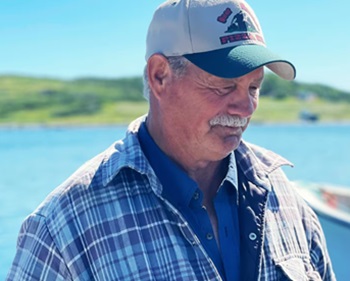 Fishermen in Newfoundland and Labrador may have acquired a reputation of getting riled up and rowdy when things aren’t going their way: crashing news conferences, for instance, or blocking the doors to Confederation Building in St. John’s. Carl Hedderson and the handful of harvesters left on the northern tip of Newfoundland say they are not those kinds of fishermen. “Nobody hears us because I guess we’re not complaining enough,” says Hedderson. Since 2022, Carl Hedderson has been quietly but diligently advocating to the federal government to issue new lobster permits so he and the other fishermen in the area can both assess and access the lobster stock and save a way of life that Hedderson says will die with his generation. “That’s the only thing that’s going to save us,” said Hedderson. photos, more, >>CLICK TO READ<< 07:01
Fishermen in Newfoundland and Labrador may have acquired a reputation of getting riled up and rowdy when things aren’t going their way: crashing news conferences, for instance, or blocking the doors to Confederation Building in St. John’s. Carl Hedderson and the handful of harvesters left on the northern tip of Newfoundland say they are not those kinds of fishermen. “Nobody hears us because I guess we’re not complaining enough,” says Hedderson. Since 2022, Carl Hedderson has been quietly but diligently advocating to the federal government to issue new lobster permits so he and the other fishermen in the area can both assess and access the lobster stock and save a way of life that Hedderson says will die with his generation. “That’s the only thing that’s going to save us,” said Hedderson. photos, more, >>CLICK TO READ<< 07:01
Ottawa shirked own guidelines when it reopened commercial cod fishery, say scientists
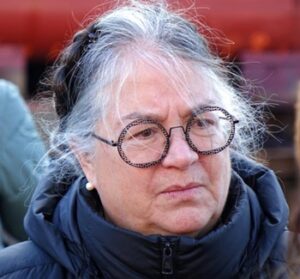 Fisheries scientists say the federal government ignored its own guidelines when it hiked cod quotas off the northern and eastern coasts of Newfoundland and Labrador last June. The scientists, some of whom worked for Fisheries and Oceans Canada for decades, say they’re struggling to understand the decision to reopen the commercial Northern cod fishery. “I was baffled when I heard the news”, said Noel Cadigan, a long-time DFO scientist who now works at Memorial University’s Marine Institute. “And that hasn’t changed.” A May 6 briefing note obtained by CBC/Radio-Canada shows DFO recommended against reopening the fishery to offshore vessels and increasing quotas. But it also assured Federal Fisheries Minister Diane Lebouthillier that lifting the moratorium and hiking the total allowable catch, as all six Liberal MPs from Newfoundland and Labrador were pushing her to do, would nevertheless align with the Fisheries Act and its rules on stock management. more, >>CLICK TO READ<< 11:15
Fisheries scientists say the federal government ignored its own guidelines when it hiked cod quotas off the northern and eastern coasts of Newfoundland and Labrador last June. The scientists, some of whom worked for Fisheries and Oceans Canada for decades, say they’re struggling to understand the decision to reopen the commercial Northern cod fishery. “I was baffled when I heard the news”, said Noel Cadigan, a long-time DFO scientist who now works at Memorial University’s Marine Institute. “And that hasn’t changed.” A May 6 briefing note obtained by CBC/Radio-Canada shows DFO recommended against reopening the fishery to offshore vessels and increasing quotas. But it also assured Federal Fisheries Minister Diane Lebouthillier that lifting the moratorium and hiking the total allowable catch, as all six Liberal MPs from Newfoundland and Labrador were pushing her to do, would nevertheless align with the Fisheries Act and its rules on stock management. more, >>CLICK TO READ<< 11:15
Will Reviving the Cod Industry Doom It Yet Again?
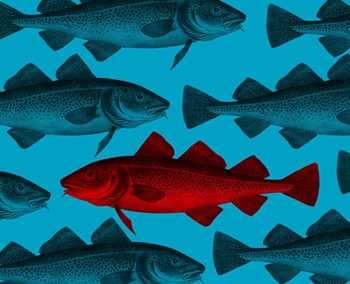 It’s been thirty-two years since the federal government first closed the northern cod fishery. It was historically the colony’s main trade for centuries, but that changed, nearly overnight, in 1992, after a press conference at the downtown Radisson Hotel in St. John’s, when then federal fisheries and oceans minister John Crosbie announced a complete halt. Fishery workers would be compensated for ten weeks, at the rate of $225 a week, and then go on employment insurance. The meagre amounts were seen as an insult to the workers whose labour was responsible for a $700 million per year industry (almost $1.35 billion in 2024 terms)—and who recognized, in the mass layoff, the spectre of their culture on the brink of extinction. Of course, fishery workers weren’t the only people who would suffer from the shuttering. With fishing boats now idle, fuel sales dropped. Schools amalgamated across communities as young families moved elsewhere and school districts struggled to fill classrooms. Those of us who lived through it will remember how local businesses offering small luxuries—restaurants and cafeterias, hair salons, cinemas—all felt the sting of a laid-off workforce. more, >>CLICK TO READ<< 07:48
It’s been thirty-two years since the federal government first closed the northern cod fishery. It was historically the colony’s main trade for centuries, but that changed, nearly overnight, in 1992, after a press conference at the downtown Radisson Hotel in St. John’s, when then federal fisheries and oceans minister John Crosbie announced a complete halt. Fishery workers would be compensated for ten weeks, at the rate of $225 a week, and then go on employment insurance. The meagre amounts were seen as an insult to the workers whose labour was responsible for a $700 million per year industry (almost $1.35 billion in 2024 terms)—and who recognized, in the mass layoff, the spectre of their culture on the brink of extinction. Of course, fishery workers weren’t the only people who would suffer from the shuttering. With fishing boats now idle, fuel sales dropped. Schools amalgamated across communities as young families moved elsewhere and school districts struggled to fill classrooms. Those of us who lived through it will remember how local businesses offering small luxuries—restaurants and cafeterias, hair salons, cinemas—all felt the sting of a laid-off workforce. more, >>CLICK TO READ<< 07:48
In cod we trust: Newfoundland’s famous fish aims at a comeback, but not everyone’s happy
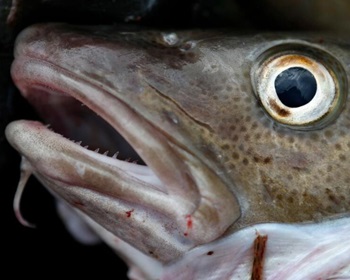 By 1992, the mighty cod had been fished to near oblivion, and the federal government declared a moratorium, indefinitely closing the industry in the hopes that the cod stock could rebuild itself over time. Some 30,000 Newfoundlanders lost their jobs and 10 per cent of the population headed west to Ontario, Alberta and beyond to find work in a mass outmigration the province has never fully recovered from. But if there is one truth in this life, it is that it is hard not to root for a good comeback story. Cod, in theory, was positioned to be such a comeback kid this summer when the federal government in June announced that the moratorium on the commercial cod fishery was being lifted after 32 years. Yet instead of parades, parties and fireworks, the announcement was met with discontent, particularly among small, inshore fish harvesters. That is, the skippers and salty olde sea dogs and their crews, wresting a living from the sea in small, 15-metre boats or less, who claim the end of the moratorium and return of the massive offshore “draggers” to the cod fishery is the beginning of the end for the North Atlantic cod 2.0. photos, more, >>CLICK TO READ<< 09:10
By 1992, the mighty cod had been fished to near oblivion, and the federal government declared a moratorium, indefinitely closing the industry in the hopes that the cod stock could rebuild itself over time. Some 30,000 Newfoundlanders lost their jobs and 10 per cent of the population headed west to Ontario, Alberta and beyond to find work in a mass outmigration the province has never fully recovered from. But if there is one truth in this life, it is that it is hard not to root for a good comeback story. Cod, in theory, was positioned to be such a comeback kid this summer when the federal government in June announced that the moratorium on the commercial cod fishery was being lifted after 32 years. Yet instead of parades, parties and fireworks, the announcement was met with discontent, particularly among small, inshore fish harvesters. That is, the skippers and salty olde sea dogs and their crews, wresting a living from the sea in small, 15-metre boats or less, who claim the end of the moratorium and return of the massive offshore “draggers” to the cod fishery is the beginning of the end for the North Atlantic cod 2.0. photos, more, >>CLICK TO READ<< 09:10
‘Deadliest Catch’ Survived Its Biggest Battle Yet
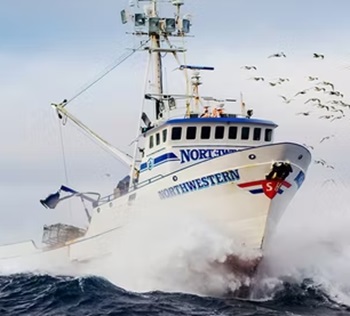 At the start of Season 19, Deadliest Catch was enduring an obstacle that could have sunk the entire program. When the Alaskan Department of Fish and Game canceled the entire season due to the population of winter snow and red king crab shrinking, production decided the show must go on. Deadliest Catch Executive Producer Aaron Starr-Paul told Deadline, “Fans can anticipate another great season of Deadliest Catch where we will document our captains as they participate in other sustainable Bering Sea crab and pot fisheries, such as Golden King Crab, Bairdi, and Cod.” For many fans, the type of catch holds little bearing. For the men and women braving the conditions, it certainly does; but what a difference a year can make! Season 20 of Deadliest Catch kicked off with the Red King Crab fishery reopening, leading to a derby-style race between the captains. Photos, more, >>CLICK TO READ<< 12:09
At the start of Season 19, Deadliest Catch was enduring an obstacle that could have sunk the entire program. When the Alaskan Department of Fish and Game canceled the entire season due to the population of winter snow and red king crab shrinking, production decided the show must go on. Deadliest Catch Executive Producer Aaron Starr-Paul told Deadline, “Fans can anticipate another great season of Deadliest Catch where we will document our captains as they participate in other sustainable Bering Sea crab and pot fisheries, such as Golden King Crab, Bairdi, and Cod.” For many fans, the type of catch holds little bearing. For the men and women braving the conditions, it certainly does; but what a difference a year can make! Season 20 of Deadliest Catch kicked off with the Red King Crab fishery reopening, leading to a derby-style race between the captains. Photos, more, >>CLICK TO READ<< 12:09
Spectre of draggers returning to cod fishery drives FFAW to call to reinstate moratorium
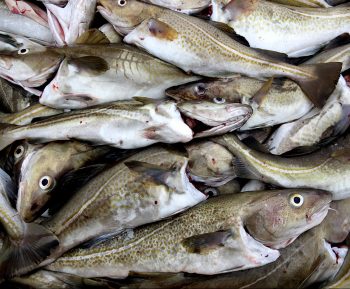 Newfoundland and Labrador’s fisheries union is calling on the federal government to revert its decision to end the moratorium on cod fishing and reinstate a stewardship fishery, a week after the federal Liberal government called the move “a historic milestone.” Greg Pretty, president of the Fish, Food and Allied Workers union (FFAW), told reporters in a press conference on Tuesday — the 32nd anniversary of the 1992 cod moratorium — there’s real concern that everything done over the last 32 years to rebuild the stock will be undone if offshore draggers, both Canadian and international, are allowed to fish cod in Newfoundland and Labrador waters again. more, >>CLICK TO READ<< 07:38
Newfoundland and Labrador’s fisheries union is calling on the federal government to revert its decision to end the moratorium on cod fishing and reinstate a stewardship fishery, a week after the federal Liberal government called the move “a historic milestone.” Greg Pretty, president of the Fish, Food and Allied Workers union (FFAW), told reporters in a press conference on Tuesday — the 32nd anniversary of the 1992 cod moratorium — there’s real concern that everything done over the last 32 years to rebuild the stock will be undone if offshore draggers, both Canadian and international, are allowed to fish cod in Newfoundland and Labrador waters again. more, >>CLICK TO READ<< 07:38

End of cod moratorium touted after 32 years as Ottawa approves small increase in commercial catch
Thirty-two years after the federal government announced a moratorium that shut down Newfoundland and Labrador’s cod industry, Fisheries Minister Diane Lebouthillier said Wednesday that it is reopening. But what the federal government described in a statement as the “historic return of the commercial northern cod fishery” will amount to just a small increase in fishing activity that had been allowed during the recent years of the moratorium. “Ending the northern cod moratorium is a historic milestone for Newfoundlanders and Labradorians,” Lebouthillier said in a statement. “We will cautiously but optimistically build back this fishery with the prime beneficiaries being coastal and Indigenous communities throughout Newfoundland and Labrador.” The Fisheries and Oceans announcement comes with political overtones. Video, more, >>CLICK TO READ<< 09:40
Kirkella aims to take Flemish Cap quota in one trip
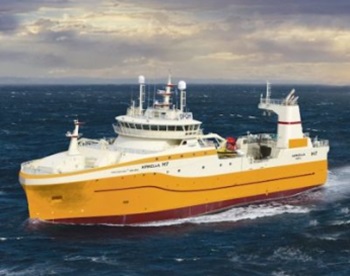 The UK’s last remaining distant waters trawler, the 81-metre Kirkella operated by UK Fisheries, is fishing on Flemish Cap, providing a British presence on these fishing grounds for the first time since 2916 – when the previous vessel to carry the same name worked there. Kirkella’s skipper Sigurbjörn Sigurðsson hopes to complete the trip on the grounds 300 nautical miles south of Newfoundland by the end of May. He and Kirkella’s mainly British crew are hoping to take their 1090-tonne NAFO cod quota before heading back to Svalbard. More, >>CLICK TO READ<< 19:50
The UK’s last remaining distant waters trawler, the 81-metre Kirkella operated by UK Fisheries, is fishing on Flemish Cap, providing a British presence on these fishing grounds for the first time since 2916 – when the previous vessel to carry the same name worked there. Kirkella’s skipper Sigurbjörn Sigurðsson hopes to complete the trip on the grounds 300 nautical miles south of Newfoundland by the end of May. He and Kirkella’s mainly British crew are hoping to take their 1090-tonne NAFO cod quota before heading back to Svalbard. More, >>CLICK TO READ<< 19:50
What You Need to Know About Cod
As a large, naturally abundant fish, cod has been eaten by various human populations for centuries. 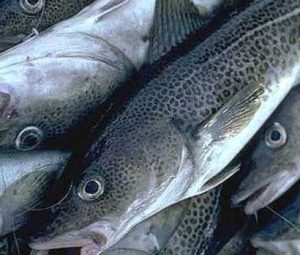 While both of America’s Atlantic cod fisheries are overfished, American stocks of Pacific cod (Gadus macrocephalus) are not. What’s more, various other cod fisheries are located around the globe, some over-exploited, others not. The fish’s prevalence, along with its suitability for eating, means that despite dwindling numbers, cod remains a stalwart of many cuisines. However, there are many things about cod that aren’t widely known. It might surprise some people to learn that cod hunt for prey. They eat a variety of animals, ranging from worms to lobsters and even small fish. Such a diet means cod are capable of growing up to an impressive length of six feet and a weight of over 100 pounds. more, >>click to read<< 11:52
While both of America’s Atlantic cod fisheries are overfished, American stocks of Pacific cod (Gadus macrocephalus) are not. What’s more, various other cod fisheries are located around the globe, some over-exploited, others not. The fish’s prevalence, along with its suitability for eating, means that despite dwindling numbers, cod remains a stalwart of many cuisines. However, there are many things about cod that aren’t widely known. It might surprise some people to learn that cod hunt for prey. They eat a variety of animals, ranging from worms to lobsters and even small fish. Such a diet means cod are capable of growing up to an impressive length of six feet and a weight of over 100 pounds. more, >>click to read<< 11:52
Commercial Cod Harvesters Opposed to Drastic Increases in Rec. Fishery
 Commercial fish harvesters in Newfoundland and Labrador are calling for stricter monitoring of the recreational cod fishery in the province and assert that unaccounted for removals in the recreational fishery could threaten the conservation integrity of the stock. The petition to the federal government supported by Conservative MP Clifford Small is to more than double the number of days in the recreational fishery from 39 to roughly 90. Recreational removals are a significant source of uncertainty in DFO science and management and is blatantly contradictory to the Department’s mandate to monitor fish landings. more, >>click to read<< 14:04
Commercial fish harvesters in Newfoundland and Labrador are calling for stricter monitoring of the recreational cod fishery in the province and assert that unaccounted for removals in the recreational fishery could threaten the conservation integrity of the stock. The petition to the federal government supported by Conservative MP Clifford Small is to more than double the number of days in the recreational fishery from 39 to roughly 90. Recreational removals are a significant source of uncertainty in DFO science and management and is blatantly contradictory to the Department’s mandate to monitor fish landings. more, >>click to read<< 14:04
Fishing deals said to have netted £393 million for Scots’ fleet
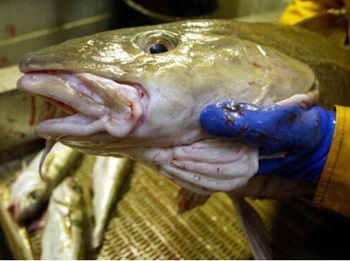 A trilateral agreement between the UK, European Union and Norway covers the total allowable catch (TAC) limits and management measures for jointly managed stocks in the Nort Sea. It has delivered quota increases for all six stocks – cod, haddock, whiting, plaice, saithe and herring. These are said to be worth an estimated £199m for Scots’ fishers, an increase of £68m compared to 2023 quotas. The government said this deal reflected positive advice from the International Council for the Exploration of the Sea, an influential group of marine scientists. It has delivered quota increases for all six stocks – cod, haddock, whiting, plaice, saithe and herring. Photos, more, >>click to read<< 14::56
A trilateral agreement between the UK, European Union and Norway covers the total allowable catch (TAC) limits and management measures for jointly managed stocks in the Nort Sea. It has delivered quota increases for all six stocks – cod, haddock, whiting, plaice, saithe and herring. These are said to be worth an estimated £199m for Scots’ fishers, an increase of £68m compared to 2023 quotas. The government said this deal reflected positive advice from the International Council for the Exploration of the Sea, an influential group of marine scientists. It has delivered quota increases for all six stocks – cod, haddock, whiting, plaice, saithe and herring. Photos, more, >>click to read<< 14::56
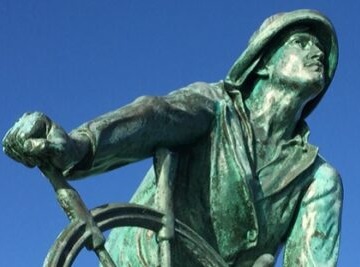
Cod: The New England Council has proposed a plan to restore cod by 2033
What that will mean is our fishing fleet would have to reduce their catch by whatever the council thinks will be helpful. Over the years NOAA has made reductions on cod and other species, based on their studies and science. Under law, they do not have to compare their findings. We need to update the Magnuson–Stevens Act that would require them to compare data before making restrictions on species of fish. Put this aside, if we want to bring back the cod, no fishing vessel can land cod over the next ten years. Great! So be it. Pay our fisherman to not catch cod. Farmers have a Farm Bill and pay farmers not to grow certain crops. So why can’t our government create a Fish Bill to do the same for the U.S. fishing industry? This could be paid for by increasing the duty on imported fish. This is a Win-Win solution. Sam Parisi, Gloucester, Mass. 19:27
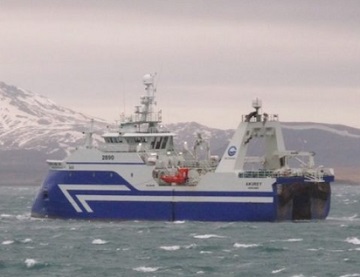
Twin-rigging yields results
Brim’s fresher trawler F/V Akurey is fishing now on the Hali grounds and according to skipper Jón Frímann Eiríksson, they were a few days into the trip before the weather improved enough to work both trawls. ‘To start with there wasn’t weather for fishing, practically blowing a storm, but it’s dropped away now. Today it’s been fine. We’ve been able to tow two trawls all day and fishing has been good,’ he said, and estimated that the catch so far is around 80 tonnes. The bulk of the catch is cod, plus some other species such as saithe. >click to read< 09:24

Icelandic trawler caught one hundred tons of cod in just 48 hours
It was Brim’s trawler “Akurey” that sailed west along the south coast of Iceland after a successful trip to the fishing grounds east of Iceland. According to skipper Eiríkur Jónsson, the catch is around 105 tonnes after almost two days of effective fishing. “We went east from Thorlákshöfn, where we landed last time, and sailed on to the first tow on Wednesday morning. The final move was on deck at five o’clock this morning. These are all fine cod, and I’m guessing that the average weight is about three kilos each,” says the skipper, >click to read< 15:31
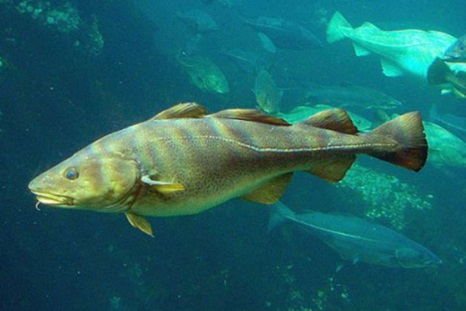
Ocean Industrialization: Fishing regulators fear wind turbines could threaten spawning area for Atlantic cod
It is the largest offshore HAPC designation in the region. Yet a main concern is cod spawning grounds in a smaller region within the designation, just east of Block Island. That area, known as Cox Ledge, overlaps with some 250 square miles currently leased to developers Ørsted and Eversource for their joint wind energy project: South Fork Wind. It is one of only two offshore wind projects that have completed the federal permitting process. “We are really going about the wind farm development very quickly,” said Kevin Stokesbury, a fisheries science professor at UMass Dartmouth, who studies cod in the Gulf of Maine. “It’s going to be quite a dramatic change to the ecosystem out there.” “We’ve all made sacrifices so cod can recover,” said Capt. Tim Rider, who fishes for groundfish and scallops. “Now they’re going to put a wind farm there,” he said of the cod spawning grounds. “How about they put it somewhere that might not be as intrusive.” >click to read< 11:05
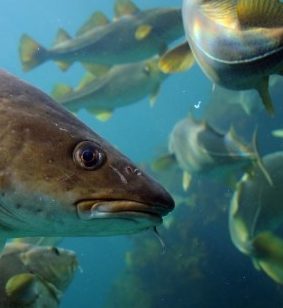
An open invitation to the public – Event to mark the 30th anniversary of northern cod moratorium
An event to mark the 30th anniversary of the announced shutdown of Newfoundland and Labrador’s most iconic fishery is scheduled for next week, with an open invitation to the public to support and share in the historic milestone. “The impact of the moratorium has had a deep and profound impact on the province’s psyche, culture, and economy,” says Ryan Cleary, one of the organizers of the non-partisan event — Moratorium Story, Northern Cod 30 Years On. “It must be recognized for the good of past and future generations.” The event is scheduled for Thursday, June 30th, 1:30 p.m.-3:30 p.m., in Salon B at the Delta Hotel in downtown St. John’s, the same room where the late John Crosbie, then-federal minister of Fisheries and Oceans, made the announcement on July 2, 1992. >Details, click to read< 14:14
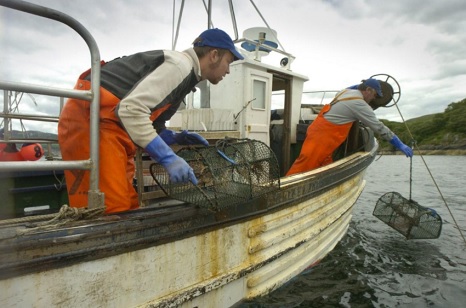
Firth of Clyde: Fishermen hit out at new measures aimed at protecting cod stocks
Exemptions allowing langoustine trawlers, creels and scallop dredgers to use the area during spawning season will be ended. The Clyde Fishermen’s Association says the move will have “a horrific impact”, but the government says it needs to act now to protect cod stocks. For 20 years, measures to protect spawning cod in the Firth of Clyde have been in place through an annual 11-week closure between February 14 and April 30. >click to read< 10:20
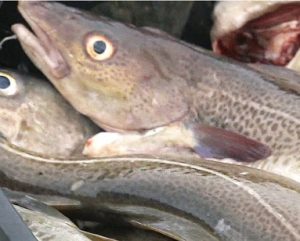
Iceland: Coastal Fishermen Unhappy With Reduced Cod Quota
Small boat fishermen in Iceland are unhappy with the government’s decision to reduce their cod fishing quota from 10,000 tonnes down to 8,500 for the coming summer season, Last year a total of 670 fishermen held coastal fishing licences. “Certain politicians predicted [coastal fishing] would explode. However, since the current system was implemented, the number of fishermen has fluctuated between 600 and 726. “While handline fishing is romantic, there’s a lot of hard work and sweat and tears mixed in with the romance,” >click to read< 08:55
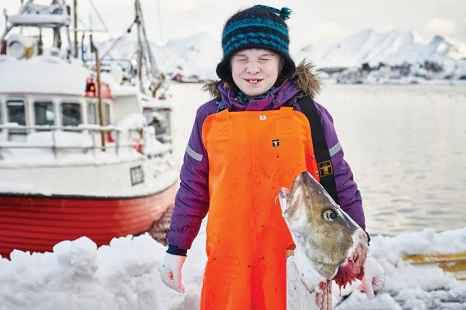
Norway: Kids Slice Out Cod Tongues for Serious Money
For as long as anybody can remember, tungeskjaererne have been responsible for the local cod tongue trade, even as fish factories give up the money they would otherwise get from the tongues by donating the fish heads to children and teenagers. The tradition introduces young people to the fishing industry and teaching them the value of entrepreneurship and hard work seems to matter more than making an extra kroner or two.The job makes selling Girl Scout cookies or running a lemonade stand look like child’s play. Arctander knows tungeskjaererne who have made more than $11,000 in a single season. “I haven’t thought of anything else in the world where kids can make so much money,”,,, >click to read< 08:34
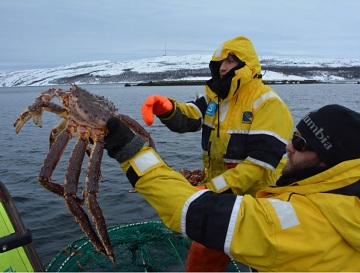
All-time high for Norwegian seafood
“2021 was another exciting export year for Norwegian seafood. We are in the very favorable position of having products in high demand the world over, even in times of crisis. This has resulted in a growth in demand, record export volumes and a total export value that Norway has never experienced before,” says Renate Larsen, CEO of the Norwegian Seafood Council. Cod is still the most important fish, One of the most exotic species from the north is the king crab. “The abolition of the quota for red king crab in Alaska combined with increased demand in Asia, the USA and Europe has led to the demand for king crab being greater than the supply,,, >click to read< 10:30
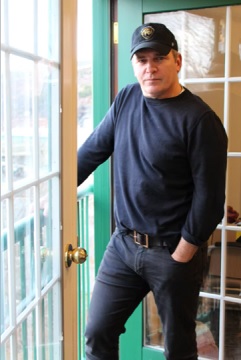
DFO responds to Ryan Cleary’s allegations of a ‘backroom’ plan
The interim executive director of Seaward Enterprises Association of Newfoundland and Labrador accused the Department of Fisheries and Oceans of orchestrating a “backroom” plan to rebuild the cod stock off southern Newfoundland and exclude the voice of inshore harvesters. According to Cleary, DFO has assembled a working group, made up of DFO and FFAW union officials, fish processors, indigenous interests and the offshore, sector to develop a rebuilding plan for cod in the 3Ps fishing zone. An official for DFO, however, says when DFO established the working group they invited members of the 3Ps Groundfish Advisory Committee to participate. >click to read< 13:32






 In a presentation at UMass Dartmouth’s School of Marine Science and Technology last week, Jonathan Grabowski said management decisions for the cod fishery have been based on trawl surveys to estimate fish populations, plus economic and environmental factors. Yet federal and regional fisheries management officials have not as readily included the social impacts of their decisions on fishermen and their communities. Fishermen have experienced high levels of stress and social disruption as the cod industry has declined due to overfishing and ineffective conservation measures. Meanwhile, their distrust in regulators has increased, he said. Using more social and experiential data from these fishermen could allow regulators to make better management decisions, Grabowski said. That could help the fishery function better, improve outcomes for the industry, conserve environmental resources, and rebuild trust.
In a presentation at UMass Dartmouth’s School of Marine Science and Technology last week, Jonathan Grabowski said management decisions for the cod fishery have been based on trawl surveys to estimate fish populations, plus economic and environmental factors. Yet federal and regional fisheries management officials have not as readily included the social impacts of their decisions on fishermen and their communities. Fishermen have experienced high levels of stress and social disruption as the cod industry has declined due to overfishing and ineffective conservation measures. Meanwhile, their distrust in regulators has increased, he said. Using more social and experiential data from these fishermen could allow regulators to make better management decisions, Grabowski said. That could help the fishery function better, improve outcomes for the industry, conserve environmental resources, and rebuild trust. 
